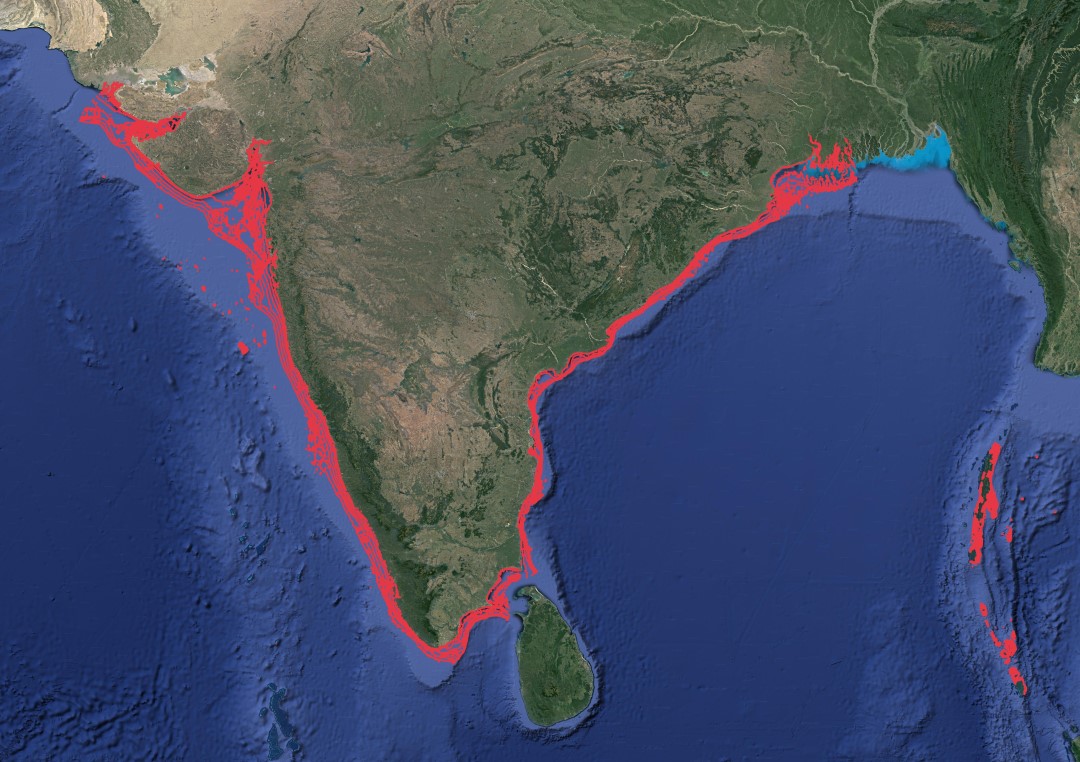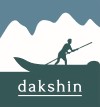Species Name
Coach Whipray
Scientific Name
Himantura uarnak
Family Name
Dasyatidae
IUCN Status
Endangered
Stingray with conspicuous dark spots on a light brown disc; the spots are well-spaced in young but crowded to from reticulated pattern in adult; tail long, slender and nearly three times body length when intact, with no caudal finfolds; marked with bands of black and white.
Biology
Length: It reaches a maximum size of 160 cm disc width (DW), males mature at ~82 cm DW and female size-at-maturity is unknown.
Gestation period: Unknown
Littter size: Based on a single pregnant female, reproduction is viviparous with histotrophy, and the size-at-birth ranges from 21 to 28 cm DW.
Life Expectancy: A reasonable estimate of the generation length for the Coach Whipray is 25 years because it is smaller than the Blackspotted Whipray (DW: 160 cm vs. 80 cm).
Diet: Feeds on small fishes, bivalves, crabs, shrimps, worms and jellyfishes.
Habitat and Distribution
Habitat: The Coach Whipray can be found in inshore waters up to 50 metres deep, but it prefers shallower settings such as estuaries and, on rare occasions, freshwater. It can be found in intertidal lagoons, reef flats, and reef faces.
Distribution: The Coach Whipray is found throughout the Indo-Pacific, from South Africa to the Philippines, in the Eastern and Western Indian and Western Central Pacific Oceans.
Known landing centres: Junglighat, Burmanallah, Wandoor, Dignabad, Malvan, Cochin Fisheries Harbour, Machilipatnam, Nizampatnam, Vodarevu, Pakala, Veraval, Mangrol, Porbander and Okha
Depth: 0-50 m.
Commercial Value
Common catch of demersal net, bottom trawl, longline and beach seine fisheries.
Threats
High fishing pressure and illegal, unreported and unregulated (IUU) fishing in the Indo-Pacific region with reports catch estimated to represent only 0.9-19.4% of the true catch. The habitat of the species is estuarine and inshore coastal waters which also means that it is threatened by extensive habitat degradation, including pollution and clearing, and destructive fishing practices.
References
- Akhilesh, K.V et al. (2014). Checklist of Chondrichthyans in Indian waters. Journal of the Marine Biological Association of India. 56. 109-120. 10.6024/jmbai.2014.56.1.01750s-17.
- Malek, A et al. (2010) First records of the Honeycomb Stingray, Himantura uarnak (Forskål, 1775), off the Syrian coast (eastern Mediterranean) (Chondrichthyes: Dasyatidae), Zoology in the Middle East, 49:1, 104-106, DOI: 10.1080/09397140.2010.10638397


Related Species
- Jenkins Whipray
- Cowtail Ray
- Scaly Whipray
- Whitespotted Whipray
- Arabian Banded Whipray
- Bengal Whipray
- Bennett's Stingray
- Blackedge Whipray
- Bleeker’s Whipray
- Blotched Fantail Ray
- Bluespotted Lagoon Ray
- Bluespotted Maskray
- Broad Cowtail Ray
- Brown Stingray
- Giant Freshwater Whipray
- Honeycomb Whipray
- Indian Sharpnose Ray
- Kuhl's Maskray
- Leopard Whipray
- Mangrove Whipray
- Narrow Cowtail Ray
- Pakistan Whipray
- Pale-edge Sharpnose Ray
- Pelagic Stingray
- Pink Whipray
- Porcupine Ray
- Roughtail Stingray
- Round Whipray
- Shorttail Whipray
- Smalleye Stingray

